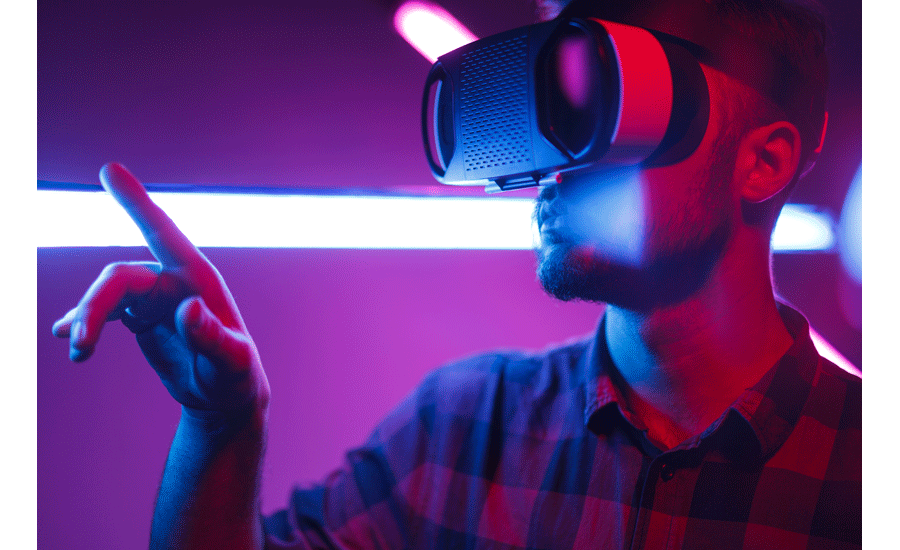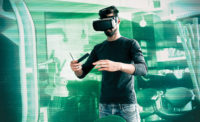Employee training and development are essential if your organization wants to engage employees, boost productivity, and retain talented team members.
With today’s technology, there are more ways than ever to develop your workforce, whether that means offering leadership training, safety courses, or essential compliance training. One of the emerging trends is using virtual reality (VR) in the training process, which can make courses more accessible, safer, and more engaging.
Here we’ll take a look at some of the ways VR is being used in training by companies around the world, as well as some of the concerns to address.
Using VR for safety training
Safety training can be complex. You need to teach employees how to react to dangerous scenarios and identify hazards in a controlled environment so they know what to do if they encounter something similar in real life.
In a training environment, it’s common to make mistakes — that’s how you learn. However, when training safety issues, making those mistakes can cause real-world damage. An employee can inadvertently cause an incident if someone gets injured or hazardous material is mishandled.
Unless you’re using VR.
Being in a virtual world using a headset gives people a strong sense that they’re actually in the scenario, allowing them to use embodied cognition. This causes VR to improve the retention of concepts and experiences compared to other types of training.
When you use VR for safety training, you don’t have to recreate hazardous situations in real life. Instead, employees can learn everything from heavy machinery repair to managing hazardous waste to walking safely on scaffolding without any actual danger.
Meeting colleagues in the metaverse
Today’s work environment is increasingly remote, which can be difficult for new employees. It’s hard to feel connected to a new company or your coworkers when you work from home.
Some organizations are tackling that isolation by using the metaverse for onboarding and team collaboration. The metaverse is made up of highly immersive virtual environments which people access using VR headsets. There are many distinct metaverses, and organizations can create their own that only employees can access.
That’s what Accenture decided to do — creating a metaverse that made onboarding new employees around the globe simpler and ensuring key experiences were part of the process. New employees create an avatar to represent themselves and then move into a virtual room full of training stations, social areas, and the avatars of colleagues. They can then receive training, meet new people, and start to get to know the company — all in a large virtual environment known as One Accenture Park.
Using VR experiences to enhance collaboration and bond far-flung remote teams together is an exciting way to improve workforce development.
Practicing and improving complex processes with VR
Another important part of workforce development is ensuring that the processes employees use for their work are efficient and effective. Usually, to ensure these processes are working effectively, you’ll have to enact process improvement. This typically occurs in a variety of scenarios.
For example, the organization can automate repetitive tasks to improve efficiency and reduce employee boredom and human error, process testing can reveal unexpected bottlenecks, and improving processes helps your company take advantage of changes in your industry or the market overall.
Using VR in process improvement allows employees to make significant changes to business workflows and then test them out without the hassle of changing production or work in the real world. Instead of having to retool an entire production line, you can test out different adjustments in VR and see how they impact workflow, employee productivity, and more.
When your organization uses VR to try out a different work process or work through a specific scenario, you can discover the real-world impacts of process changes without the real-world costs. Only once your team has settled on an improvement with promising ROI do you need to invest money in the change.
Cautions in using VR at work
With VR, one of the overlooked but important hazards is physical. People are so immersed in the virtual environment that they may crash into walls, trip over tables and chairs, or otherwise injure themselves in the physical environment. It’s important to keep space for VR clear and to maximize the amount of interaction employees can do while sitting down.
Employees may also struggle with “simulator sickness,” a queasiness similar to motion sickness. This happens because the eyes and brain are processing movement that the body isn’t registering, and the disconnect can make people ill. To avoid this, try to keep VR sessions to less than 20 minutes.
Finally, when your organization is operating in a metaverse or another kind of computer network where multiple users log in remotely, it’s essential to maximize cyber security and carefully educate employees about potential cyber threats.
Improve training with VR
While VR isn’t the best platform for every type of training, it’s excellent in multiple applications. We’ve only just begun to explore the capabilities of VR in training, and your organization can be on the cutting edge of improving everything from onboarding to work processes.



